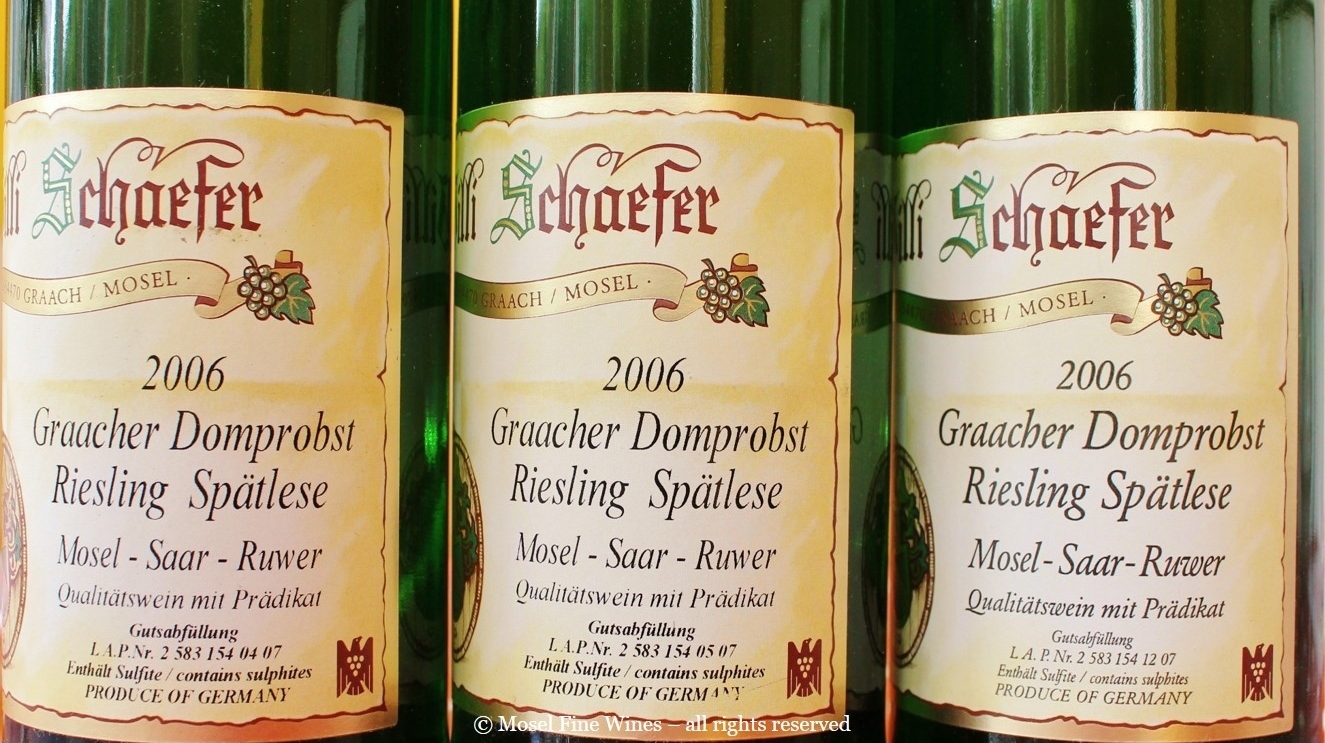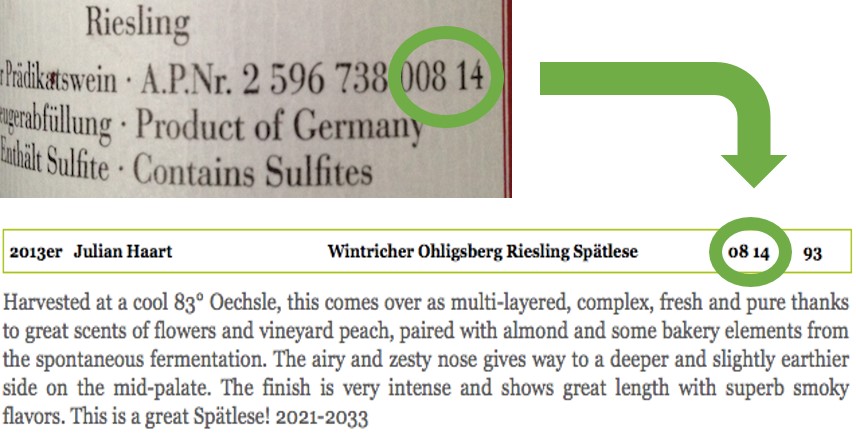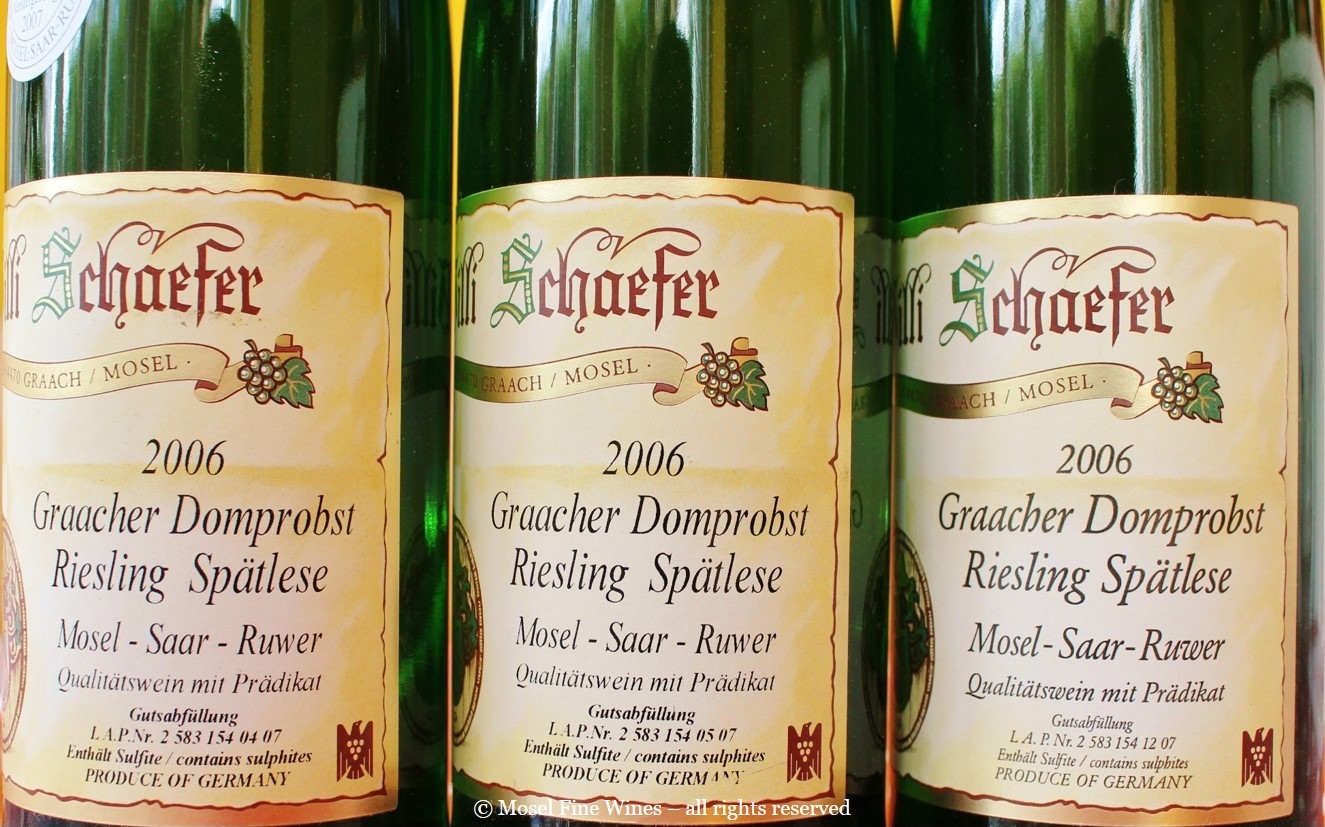
You will hear German wine lovers talk about Willi Schaefer Domprobst Spätlese AP 5 or Fritz Haag Auslese AP 6. What is this AP? A formidable tracing system which German wine lovers need to understanding to navigate through their favorite Estates.

Unlike many other countries, Germany has implemented a comprehensive tracking system for its “quality” wines (Qualitätswein and Prädikatswein). This system is called AP, short for Amtliche Prüfungsnummer, which one can loosely translate as “Official Testing Number”.


(image: Mosel Fine Wines, all rights reserved)
We encourage you to have a look at the labels (or back labels) of your bottles and find the corresponding AP number in our tasting notes.
What do these numbers stand for? The AP number is the number given by public authorities to each wine submitted for commercialization. In the example here above, the numbers represent the following:
For each Estate, the “2”, “596” and “738” part of the AP are fixed. For most Estates, the year of submission is vintage + 1. Therefore, out of simplicity, many wine lovers refer to the above AP simply as “AP 8.”
Each bottling, even from a same tank but bottled at different moments, gets a separate AP number.
Now that you understand the lot numbering system, you are entitled to ask the question: “Hell, why bother? Ok, lot numbers are different but surely not THAT different!”
Often not but not always. Here is the snag.
Sometimes, especially at some leading Estates, different lot numbers may refer to very different wines, be it in terms of:
As a result, very different wines (possibly even priced differently) may have exactly the same label except for the AP number. As you can see in the example from the Willi Schaefer Estate here below, the three Graacher Domprobst Spätlese have exactly the same label but different AP numbers. In this case, the AP 12 (right) refers to a lighter Spätlese, the AP 05 (center) to the bigger Spätlese (which also costs also a little bit more) and the AP 04 (left) to the auction bottling (which usually costs a lot more!).

Auction wines usually have a round-shaped sticker on the bottle – as you can just see at the top left corner of the picture here above. But this is not always the case! So knowing your AP number can be very useful to unearth little treasures (if you want to learn more about the Auctions, we encourage you to read the introduction section of our annual Auction Guide).
Such situations (i.e. very different wines with only AP numbers as differentiator) appear regularly in every single of our issues. For instance, in our Issue No 26 (Oct 2014), we report on qualitatively very different wines which only differ by AP numbers by, among others, the Hofgut Falkenstein and Merkelbach Estates.
As it is nearly impossible to know "when it is important to write down or not write down the AP number" (and this even for us!), we always provide the last 4-5 “meaningful” digits of the AP. This way, our readers can check if the TN corresponds to the wine he/she considers buying or drinking.
There may however be instances in which you will not find any AP in our tasting notes, in particular:
In other countries, there is no such through and systematic approach to bottling. But this does not mean that the same label may not stand for very different wines. The only difference is that the consumer is unable to know this from the label.
For instance in Burgundy, it is not possible to know from the label which bottling of Meursault one gets at the famous Coche-Dury Estate (many different crus are bottled separately without this being mentioned on the label!) or which bottling one gets at those Estates which bottle barrel by barrel or lot by lot (such as the Domaine de la Romanée-Conti is for instance known to do).
The German AP lot numbering obligation may seem complex but it is a formidable tool to ensure traceability towards consumers.
© Text by Mosel Fine Wines "The Independent Review of Mosel Riesling ... and beyond!"
Disclaimer: Mosel Fine Wines is an independent publication and has no commercial relationship with any Estate, association or organization featured in this article.